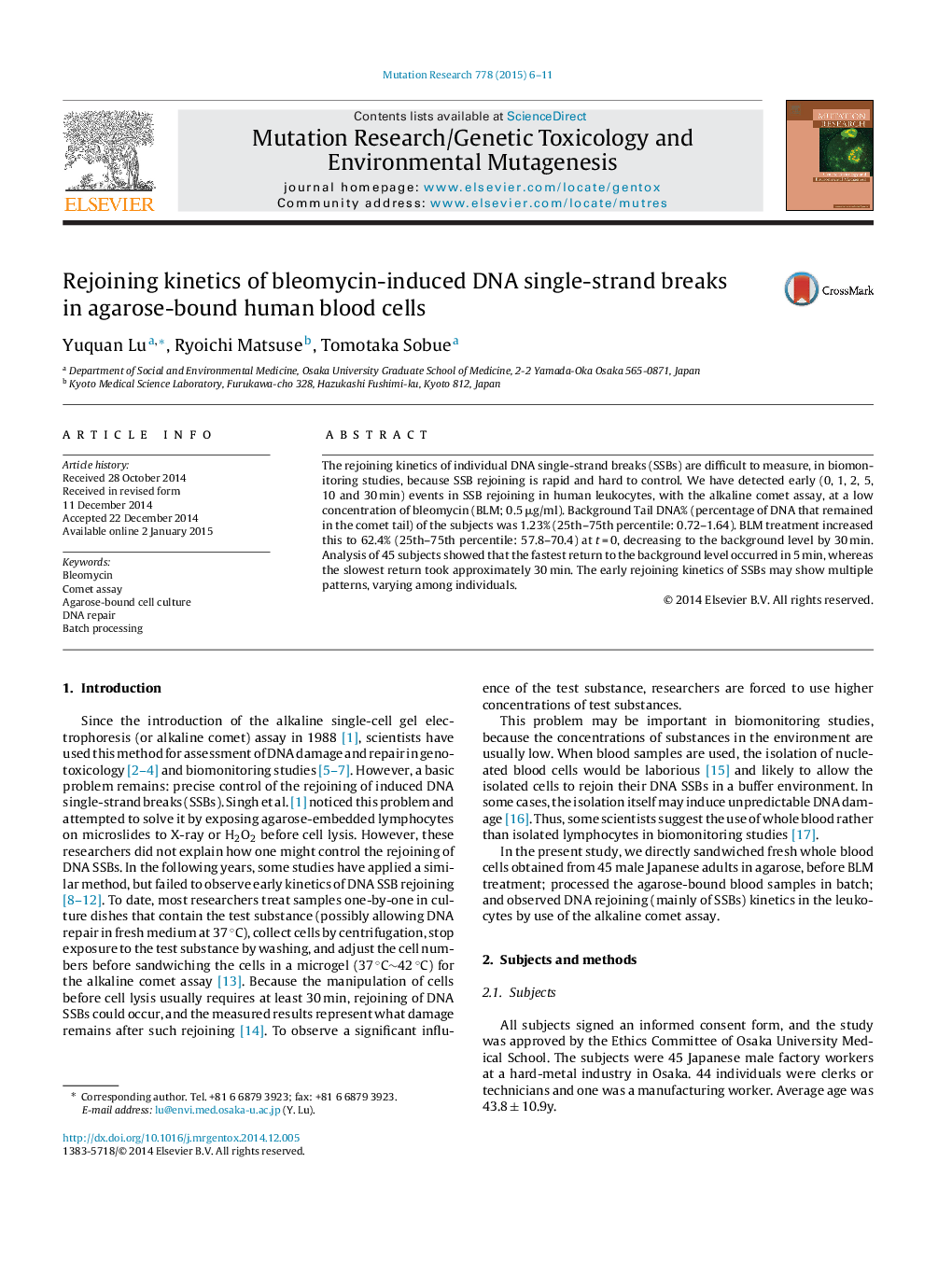| Article ID | Journal | Published Year | Pages | File Type |
|---|---|---|---|---|
| 8456428 | Mutation Research/Genetic Toxicology and Environmental Mutagenesis | 2015 | 6 Pages |
Abstract
The rejoining kinetics of individual DNA single-strand breaks (SSBs) are difficult to measure, in biomonitoring studies, because SSB rejoining is rapid and hard to control. We have detected early (0, 1, 2, 5, 10 and 30 min) events in SSB rejoining in human leukocytes, with the alkaline comet assay, at a low concentration of bleomycin (BLM; 0.5 μg/ml). Background Tail DNA% (percentage of DNA that remained in the comet tail) of the subjects was 1.23% (25th-75th percentile: 0.72-1.64). BLM treatment increased this to 62.4% (25th-75th percentile: 57.8-70.4) at t = 0, decreasing to the background level by 30 min. Analysis of 45 subjects showed that the fastest return to the background level occurred in 5 min, whereas the slowest return took approximately 30 min. The early rejoining kinetics of SSBs may show multiple patterns, varying among individuals.
Related Topics
Life Sciences
Biochemistry, Genetics and Molecular Biology
Cancer Research
Authors
Yuquan Lu, Ryoichi Matsuse, Tomotaka Sobue,
